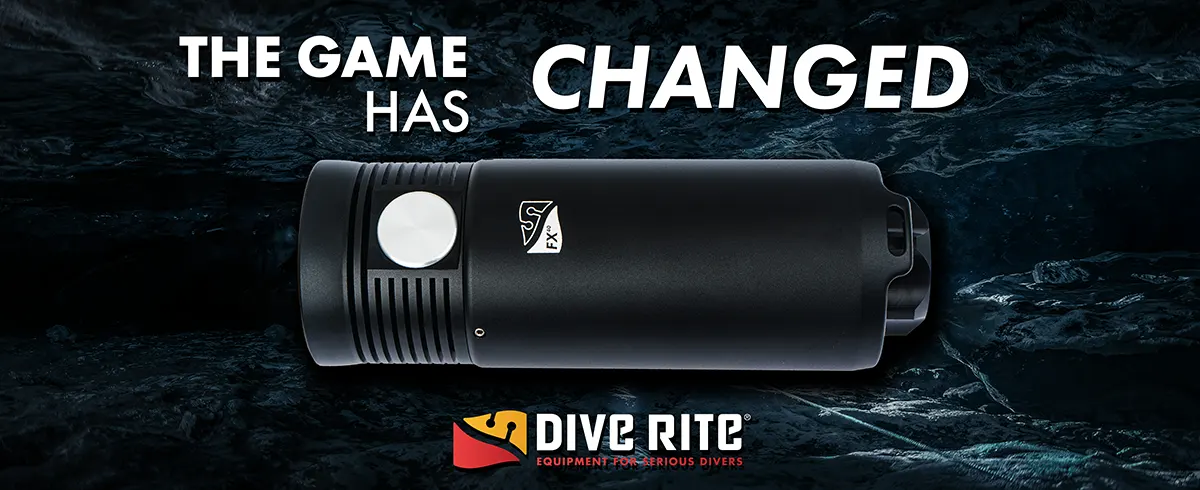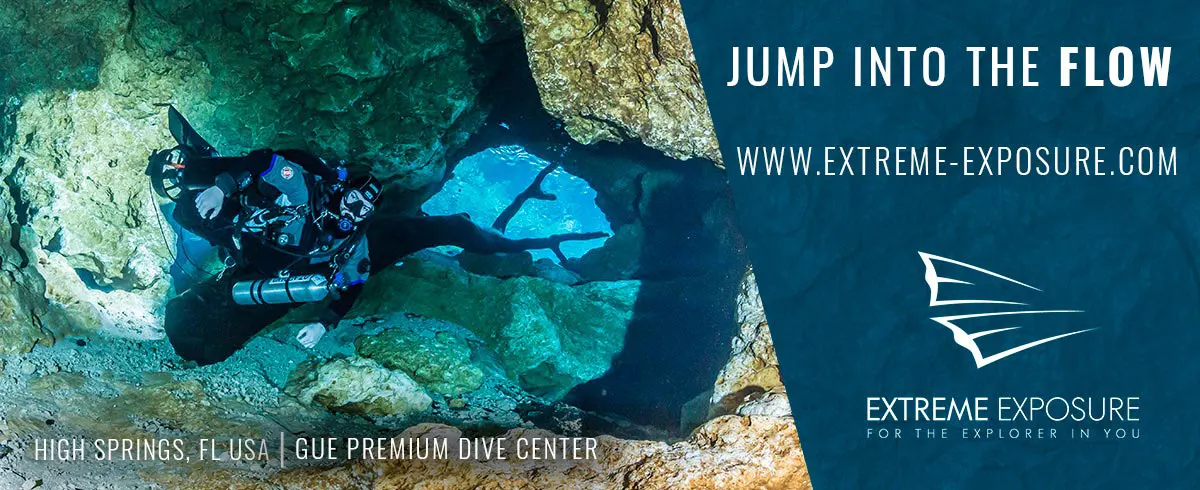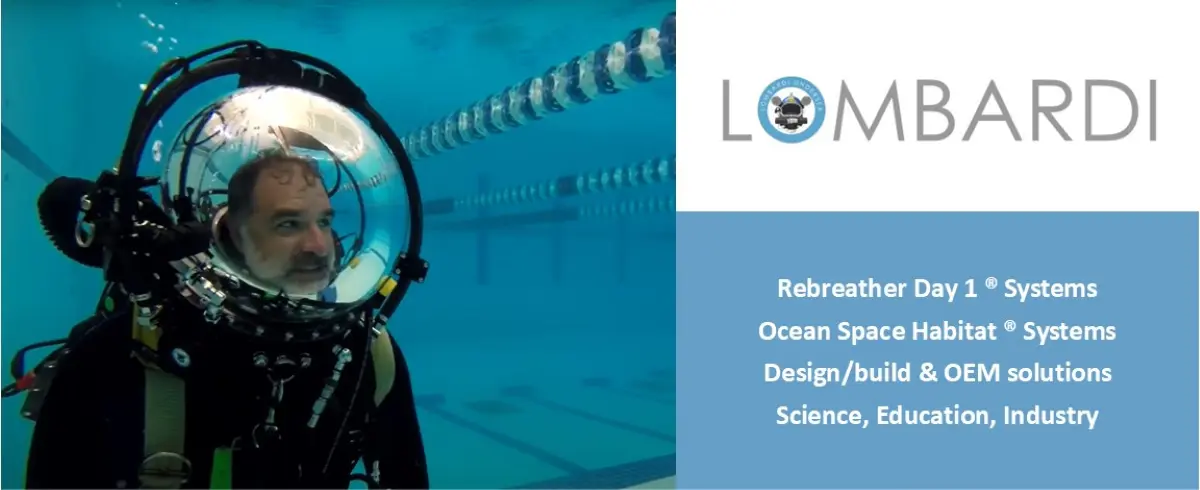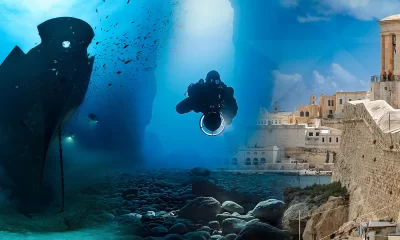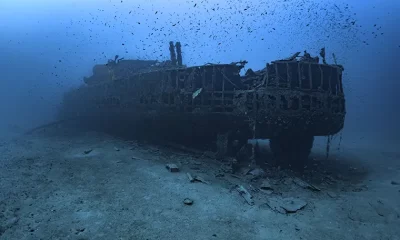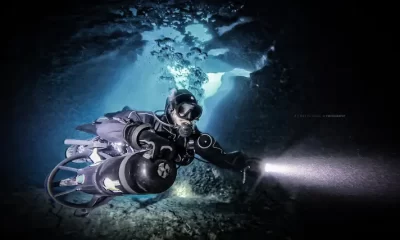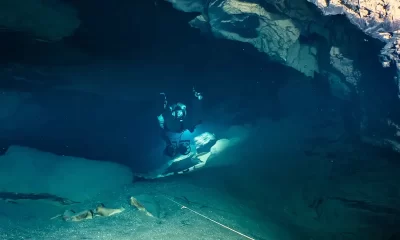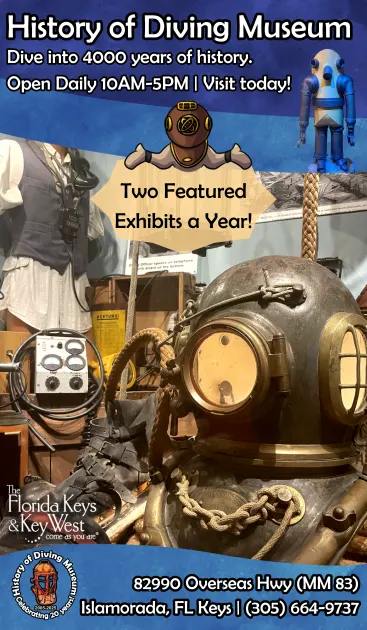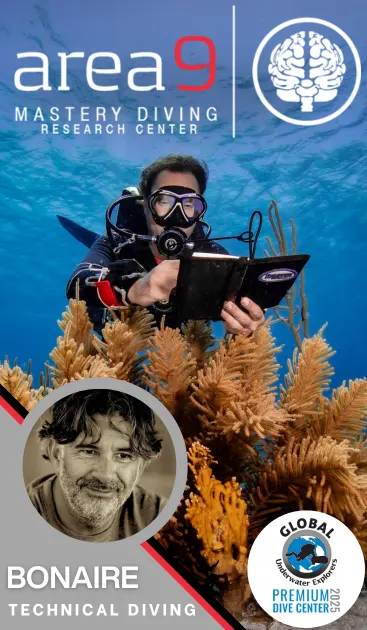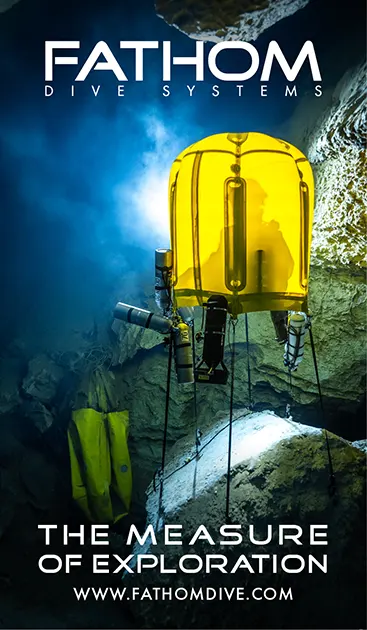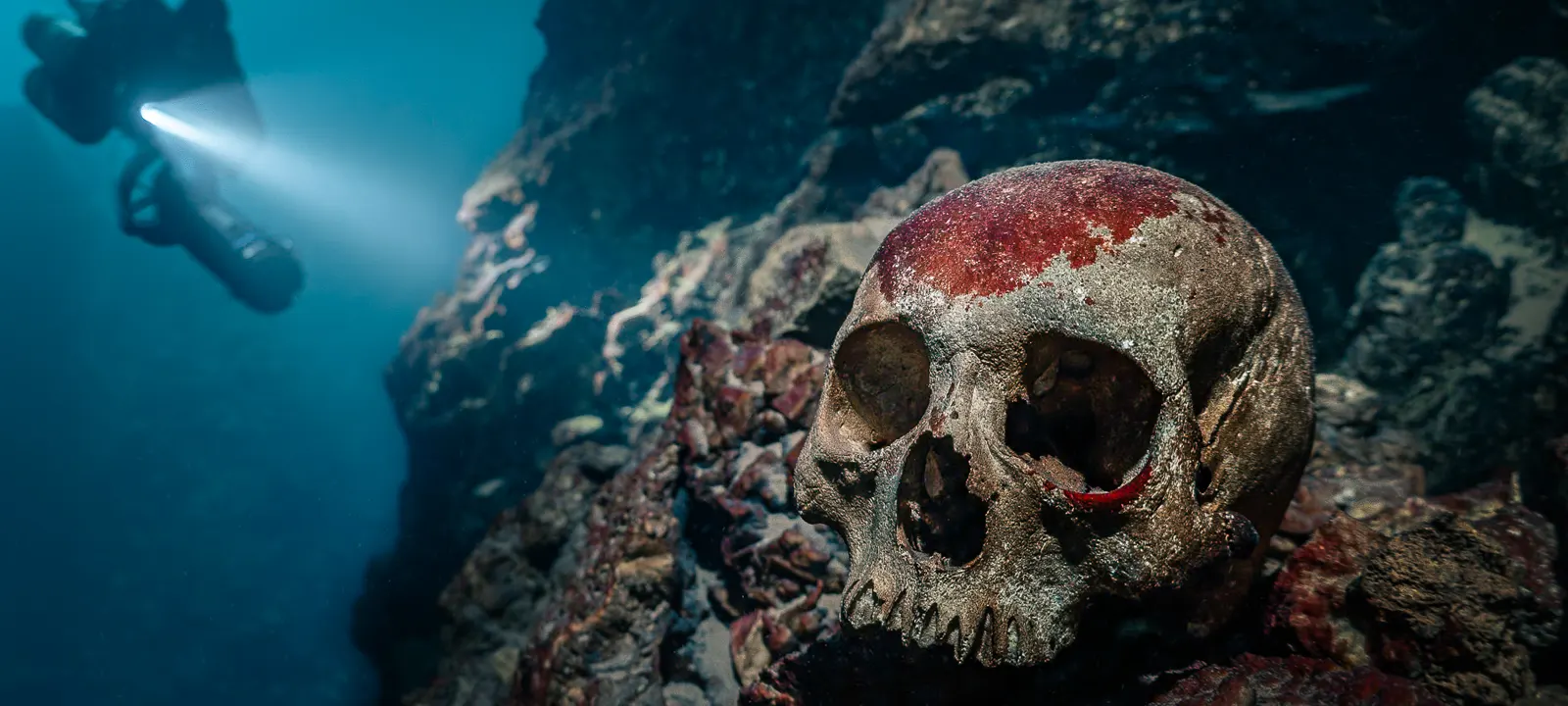
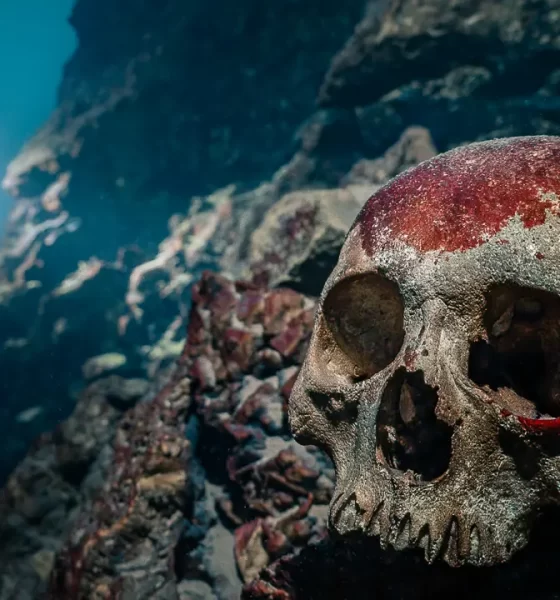
Latest Features
Descent into a Grave—China’s Green Cave Sink
Cave diver and veteran underground photographer Fan Ping reports on World Underwater Discovery’s (WUD) ongoing exploration of Green Cave Sink, located in Meizhou, Guangdong. Based on their research, along with local historical accounts and extensive finds of human remains, it appears that the sink, believed to be the only such site in China, once served as a site for ritual executions—a grim discovery made by technical divers, and not by archaeologists.
By Fan Ping
The skull you see in this photo was what we saw first as we descended into Green Cave Sink (绿窟潭)—and it’s stuck with me the most. It has rested quietly on a rock ledge, just five meters below the surface. Over time, minerals in the water have begun to coat its surface, leaving behind distinct signs of calcification—like silent rust left by the passing of centuries. At that moment, I didn’t feel fear or even fascination. What I felt was heavier, harder to name. This wasn’t a planted movie prop or a prank played by some thrill-seeking explorer. It was real. Someone once visited here. And now, they remain here.
This skull was just the beginning—it was the first of many human remains lying in the depths of Green Cave Sink.
A Story Long Silenced Beneath the Water
Green Cave Sink is located in Yanqian Village, Longwen Township, Meizhou, Guangdong. It was the first fully submerged terrestrial karst cave discovered in China. Shaped by the slow erosion of limestone over thousands of years, the cave is deep, sealed, and still (no currents); it has constant water temperature and crystal-clear visibility. It’s one of the rare natural environments in the region that can support deep underwater photography and archaeological research.
Since 2012, the team from World Underwater Discovery (WUD) has been exploring and documenting the site for conservation and study. The discovery of the first intact human remains—found at a depth of 46 m/151 ft—marked the start of a long, careful investigation. As exploration continued, more remains appeared: skulls, vertebrae, limbs. Some were intact. Others were scattered. But, together, they told a clear and haunting story: This place serves, in some form, as a grave.
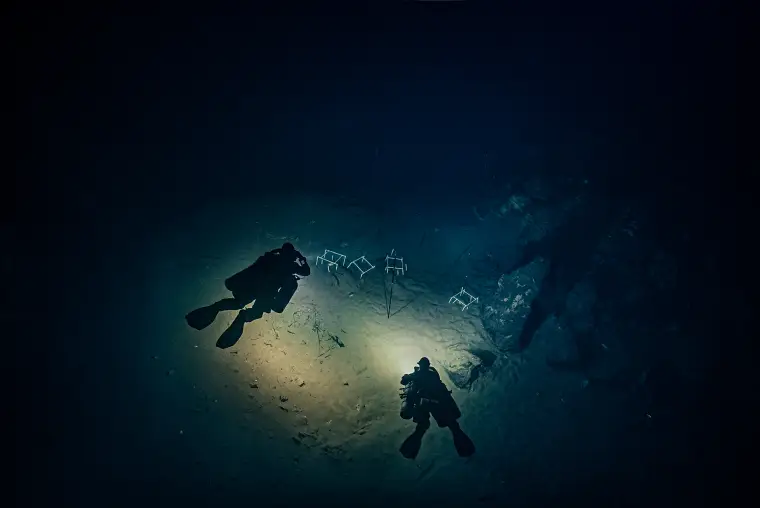
WUD’s research, along with local historical accounts, point to a grim tradition once practiced here during the late Qing and early Republican periods: drowning in the pig cage (jin zhu long). It was a form of clan-based punishment, typically for those accused of violating family rules—often women. Victims were placed in bamboo cages and submerged in deep water. It’s likely that the remains we found belonged to people who were victims of that practice.
To our knowledge, this is the only site in China where such a ritual execution ground has been preserved underwater and rediscovered—not by archaeologists—but by technical divers.

Careful, Quiet, and Intentional
We carried out this photography project in partnership with the WUD team over three days during three official dives. We touched nothing. We disturbed nothing. Every decision we made followed strict conservation and research protocols.
We used closed-circuit rebreathers, reaching a maximum depth of 60 m/200 ft, surveying and filming in stages. Visibility in the sink was good for winter—around 8 to 10 m/30 ft—but, since Green Cave Sink lies hidden deep within the forested hills, little natural light reaches below. Our main light came from underwater video systems.
As we moved from open water into the enclosed chambers of the cave, the structure became more intricate. Stalactites hung from the ceilings. The walls twisted and folded. The floor was scattered with loose rock. Though sealed off, the space felt vast. Minerals had painted the formations in striking shades of red, gold, and ochre. The visual impact was almost surreal. Preservation here was extraordinary—bones that may have lain undisturbed for over a century still showed fine anatomical detail as if held in stasis.
Every shot was carefully planned and executed. Our team had clearly defined roles: I handled photography, Bai Wei was our primary model, Beili Zhou served as lighting assistant and secondary model, and Carrol Sin handled safety and secondary lighting. The atmosphere during the dives was focused and hushed. We felt as if we were performing surgery—except our patient was the past, and we were only there to observe.
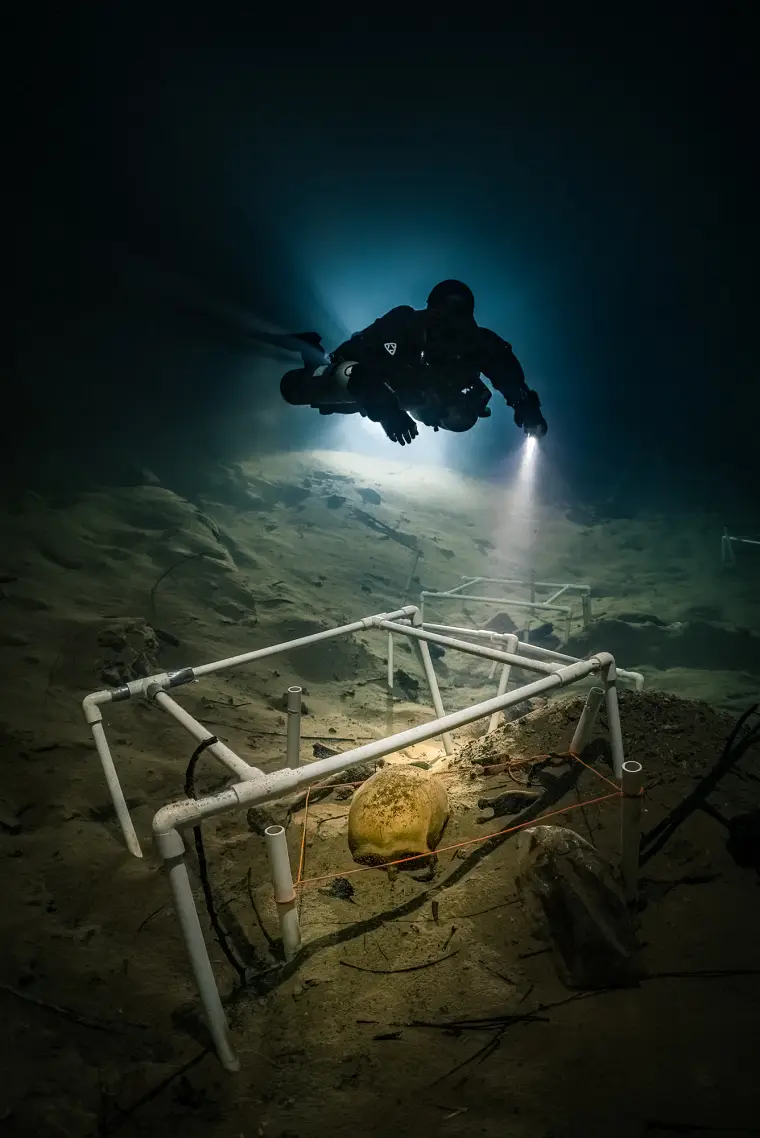
Diving as a Way into the Past
This experience in Green Cave Sink fundamentally changed the way I see diving. It’s not just about pushing limits or exploring the unknown—it’s also a powerful way of entering history. In these underwater spaces, time slows. It stills. The past is held in water and stone, waiting for a diver’s light to bring it—momentarily—back into view.
Southern China, especially the provinces of Guangxi, Guangdong, and Guizhou, holds one of the most extensive and complex karst landscapes in the world. And what we currently know of its caves, sinkholes, and submerged systems is just a sliver of what’s actually there.
Green Cave Sink is just one entry point—one beginning. It reminds us how much remains hidden beneath our feet: places waiting to be seen, documented, and preserved.
I hope to return—with others who share this calling—to keep diving, photographing, and telling the stories of these sleeping memories of the Earth.
DIVE DEEPER
InDEPTH: Homegrown Chinese Tech
Here are some of Ping’s other stories:
InDEPTH: Plan The Shoot, Shoot The Plan by Fan Ping
InDEPTH: What Does It Cost to Become a Professional Cave Photographer? by Fan Ping
InDEPTH: Close Calls: I Ripped My Drysuit a Kilometer Back In The Cave by Fan Ping
InDEPTH: Underwater Galaxy by Fan Ping

Fan Ping is a photographer and filmmaker based in Atlanta, Georgia, USA dedicated to sharing the beauty of the underwater world through his lens. He specializes in combining artistic elements with nature and complex lighting skills in overhead environments, and this artistic style has brought him international acclaim, including awards from many major underwater photo/video competitions. You can follow his work on Facebook and Instagram: Be Water Imaging.

